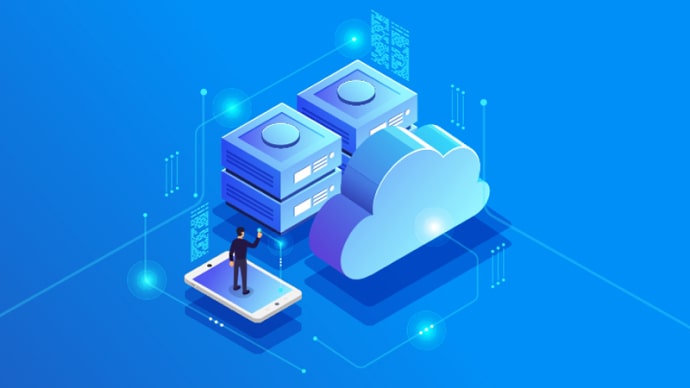
- Home
- Training Courses
- Certifications
- Professional Cloud Developer
Professional Cloud Developer: Professional Cloud Developer
PDFs and exam guides are not so efficient, right? Prepare for your Google examination with our training course. The Professional Cloud Developer course contains a complete batch of videos that will provide you with profound and thorough knowledge related to Google certification exam. Pass the Google Professional Cloud Developer test with flying colors.

Curriculum for Professional Cloud Developer Certification Video Course
| Name of Video | Time |
|---|---|
 1. What is a GCP Professional Cloud Developer? |
3:00 |
 2. Cloud Developer Exam Objectives |
5:00 |
 3. Cloud Developer Deep Dive Notes |
2:00 |
 4. Course Setup |
2:00 |
| Name of Video | Time |
|---|---|
 1. Course Material Download |
2:00 |
 2. What are Test Tips? |
2:00 |
 3. Whiteboards and Demos |
1:00 |
 4. Sign up for Free Tier or Credits if available |
2:00 |
 5. GCP Pricing Calculator |
3:00 |
 6. SDK Install |
10:00 |
 7. Read the GCP Cloud Developer Deep Dive Notes. |
2:00 |
| Name of Video | Time |
|---|---|
 1. Google Cloud Intro (Condensed Version) |
8:00 |
 2. GCP Hierarchy |
9:00 |
 3. Whiteboard GCP Hierarchy |
6:00 |
 4. Demo - Projects |
5:00 |
 5. Compute Options |
4:00 |
| Name of Video | Time |
|---|---|
 1. Compute Engine |
14:00 |
 2. Compute Engine Demo |
8:00 |
 3. Instance Groups |
2:00 |
 4. Instance Groups Demo |
10:00 |
| Name of Video | Time |
|---|---|
 1. App Engine Security Scanner |
6:00 |
 2. App Engine Demo |
9:00 |
 3. App Engine or Kubernetes Engine |
8:00 |
| Name of Video | Time |
|---|---|
 1. Kubernetes Engine |
9:00 |
 2. Demo- Kubernetes Engine |
6:00 |
 3. Whiteboard - Kubernetes |
10:00 |
| Name of Video | Time |
|---|---|
 1. Cloud Functions Basics |
7:00 |
 2. Cloud Functions Demo |
4:00 |
| Name of Video | Time |
|---|---|
 1. Data Storage Basics |
12:00 |
 2. Cloud Storage Basics |
10:00 |
 3. Cloud Storage |
16:00 |
 4. Cloud Storage Demo Part2 |
13:00 |
| Name of Video | Time |
|---|---|
 1. Networking Overview |
10:00 |
 2. VPC Overview |
11:00 |
 3. IP Addressing |
3:00 |
 4. Networking Whiteboard |
11:00 |
 5. Networking Demo |
4:00 |
 6. VPC Whiteboard |
5:00 |
 7. Hybrid Connectivity Networking Whiteboard |
6:00 |
| Name of Video | Time |
|---|---|
 1. Download SDK |
10:00 |
 2. Devops on GCP Part 1 |
17:00 |
 3. Devops on GCP Part 2 |
6:00 |
 4. Cloud Source Repositories Demo |
9:00 |
 5. Cloud Build Demo |
5:00 |
 6. Demo Gcloud Commands |
3:00 |
| Name of Video | Time |
|---|---|
 1. Section 1 Coverage |
2:00 |
 2. 1.1 Designing performant applications and APIs |
1:00 |
 3. Infrastructure as a Service vs. Container as a Service vs. Platform as a Service |
3:00 |
 4. Portability vs. platform-specific design |
4:00 |
 5. Evaluating System Considerations |
7:00 |
 6. Operating system versions and base runtimes of services |
3:00 |
 7. Service Locality |
3:00 |
 8. Whiteboard Service Locality |
6:00 |
 9. Locality Test Tips |
3:00 |
 10. Microservices |
3:00 |
 11. Whiteboard- Microservices |
5:00 |
 12. Testips - Microservices |
1:00 |
 13. Defining a key structure for high write applications using Cloud Storage, Cloud |
7:00 |
 14. Defining a key structure Test Tips |
1:00 |
 15. Session management |
5:00 |
 16. Test Tips Session Management |
2:00 |
 17. Loosely coupled applications using asynchronous Cloud Pub/Sub events |
3:00 |
 18. Demo Pub Sub |
3:00 |
 19. Test Tips Cloud Pub Sub |
1:00 |
 20. Deploying and securing an API with cloud endpoints |
11:00 |
 21. Demo Cloud Endpoints |
4:00 |
 22. Test Tips -API Management |
2:00 |
 23. Health checks |
4:00 |
 24. TestTips Healthchecks |
1:00 |
 25. Google-recommended practices and documentation |
5:00 |
 26. 1.2 Designing secure applications |
1:00 |
 27. Applicable regulatory requirements and legislation |
4:00 |
 28. TestTips Regulatory Requirements |
1:00 |
 29. Security mechanisms that protect services and resources |
6:00 |
 30. TestTips Security Mechanisms |
1:00 |
 31. Storing and rotating secrets |
12:00 |
 32. Secrets Whiteboard |
6:00 |
 33. TestTips Secrets |
3:00 |
 34. IAM roles for users/groups/service accounts |
9:00 |
 35. IAM Whiteboard |
2:00 |
 36. TestTips IAM |
3:00 |
 37. HTTPs certificates |
1:00 |
 38. Test Tips Https Certificates |
1:00 |
 39. Demo Https Certificates |
2:00 |
 40. Google-recommended practices and documentation |
2:00 |
 41. Defining database schemas for Google-managed databases |
7:00 |
 42. Session Management |
5:00 |
 43. TestTips Session Management |
2:00 |
 44. Loosely Coupled Apps – Cloud Pub/Sub |
3:00 |
 45. Demo - Loosely Coupled Apps – Cloud Pub/Sub |
3:00 |
 46. Whiteboard - Cloud Pub/Sub |
5:00 |
 47. TestTips Loosely Coupled Apps – Cloud Pub/Sub |
1:00 |
 48. Deploying and securing an API with cloud endpoints |
11:00 |
 49. Demo Deploying and securing an API with cloud endpoints |
4:00 |
 50. TesTips Deploying and securing an API with cloud endpoints |
2:00 |
 51. TestTips Health Checks |
4:00 |
 52. Health Checks |
4:00 |
 53. Choosing data storage options based on use case considerations |
6:00 |
 54. TestTips Data Storage |
1:00 |
 55. Working with data ingestion systems |
9:00 |
 56. Following Google-recommended practices and documentation |
5:00 |
 57. Using managed services |
4:00 |
 58. Using the strangler pattern for migration |
3:00 |
 59. Strangler Whiteboard |
5:00 |
 60. Codelabs - Exercise for Practice- Cloud Functions |
2:00 |
 61. Codelabs - Cloud Pub/sub |
1:00 |
 62. Google-recommended practices and documentation |
5:00 |
 63. Section Review Questions |
8:00 |
| Name of Video | Time |
|---|---|
 1. Section 2 Building and Testing Applications |
2:00 |
 2. Local application development emulations |
1:00 |
 3. Developer Tools and SDK |
4:00 |
 4. Demo SDK Install and basic commands |
13:00 |
 5. Demo SDK Emulators |
6:00 |
 6. Demo CLI Create Project |
9:00 |
 7. 2.2 Building a continuous integration pipeline |
1:00 |
 8. Creating a Cloud Source Repository and committing code to it |
8:00 |
 9. DevOps and Pipelines |
10:00 |
 10. Developing unit tests for all code written |
7:00 |
 11. Developing an integration pipeline using services |
4:00 |
 12. Reviewing test results of continuous integration pipeline |
1:00 |
 13. TestTips |
2:00 |
 14. Whiteboard - DevOps |
5:00 |
 15. 2.3 Testing. Considerations include: |
1:00 |
 16. Performance Testing |
9:00 |
 17. Whiteboard Testing |
9:00 |
 18. TestTips Testing |
3:00 |
 19. Algorithm design |
1:00 |
 20. Modern application patterns |
2:00 |
 21. Efficiency |
4:00 |
 22. TestTips |
2:00 |
 23. Section Review Questions |
9:00 |
| Name of Video | Time |
|---|---|
 1. Section 3 |
3:00 |
 2. 3.1 Implementing appropriate deployment strategies based on the target compute |
1:00 |
 3. Blue Green Deployments |
6:00 |
 4. Whiteboard App Engine |
8:00 |
 5. Demo App Engine |
3:00 |
 6. 3.2 Deploying applications and services on Compute Engine |
1:00 |
 7. Launching a compute instance using GCP Console and Cloud SDK |
8:00 |
 8. Moving a persistent disk to different VM |
6:00 |
 9. Creating an autoscaled managed instance group using an instance template |
11:00 |
 10. Generating/uploading a custom SSH key for instances |
4:00 |
 11. Configuring a VM for Stackdriver monitoring and logging |
5:00 |
 12. Creating an instance with a startup script that installs software |
3:00 |
 13. Creating custom metadata tags |
5:00 |
 14. Creating a load balancer for Compute Engine instances |
10:00 |
 15. 3.3 Deploying applications and services on Google Kubernetes Engine |
1:00 |
 16. Deploying a GKE cluster |
4:00 |
 17. Kubenetes Engine Whiteboard |
10:00 |
 18. Kubenetes Engine Clusters Demo |
18:00 |
 19. TestTips |
2:00 |
 20. 3.4 Deploying an application to App Engine. Considerations include: |
1:00 |
 21. Scaling configuration |
10:00 |
 22. GKE or App Engine |
8:00 |
 23. TestTips App Engine |
3:00 |
 24. Cloud Functions that are triggered via an event |
5:00 |
 25. Cloud Functions that are invoked via HTTP |
2:00 |
 26. 3.6 Creating data storage resources. Tasks include: |
1:00 |
 27. Creating a Cloud SQL instance |
4:00 |
 28. Cloud Datastore |
13:00 |
 29. Creating BigQuery datasets |
3:00 |
 30. Creating a Cloud Storage bucket |
7:00 |
 31. Creating a Cloud Pub/Sub topic |
5:00 |
 32. TestTips Create data storage |
1:00 |
 33. 3.7 Deploying and implementing networking resources. Tasks include: Creating an |
1:00 |
 34. Creating an auto mode VPC with subnets |
4:00 |
 35. Setting up a domain using Cloud DNS |
4:00 |
 36. TestTips Networking |
3:00 |
 37. 3.8 Automating resource provisioning with Deployment Manager |
1:00 |
 38. Deployment Manager |
2:00 |
 39. Deployment Manager Demo |
7:00 |
 40. TestTips |
1:00 |
 41. 3.9 Managing Service accounts. Tasks include: Creating a service account with a |
1:00 |
 42. Service Accounts |
4:00 |
 43. Save KeyFile |
3:00 |
 44. Codelabs |
1:00 |
 45. TestTips |
1:00 |
| Name of Video | Time |
|---|---|
 1. Section 4 Overview |
1:00 |
 2. Enable Bigquery and permissions on dataset |
11:00 |
 3. SQL Searches/Selects |
4:00 |
 4. Whiteboard- Fetching Ingesting data |
4:00 |
 5. Codelab -Biquery |
1:00 |
 6. BigTable or BigQuery |
2:00 |
 7. Writing an SQL query to retrieve data from relational databases |
9:00 |
 8. Connecting to SQL |
3:00 |
 9. Gsutil Storing and retrieving objects from Google Storage |
4:00 |
 10. Quickstart - Cloud Storage GsUtil |
1:00 |
 11. Connecting to a Cloud SQL instance |
3:00 |
 12. Enabling Cloud Spanner and configuring an instance |
8:00 |
 13. Cloud Spanner Whitepaper |
1:00 |
 14. Demo -Cloud Spanner |
16:00 |
 15. Cloud Spanner Best Practices |
5:00 |
 16. DataProc or Dataflow |
1:00 |
 17. TestTips |
4:00 |
 18. Configuring a Cloud Pub/Sub push subscription to call an endpoint |
5:00 |
 19. Data Ingestion Sources |
3:00 |
 20. 4.2 Integrating an application with compute services. Tasks include: |
1:00 |
 21. Provisioning and configuring networks |
11:00 |
 22. Writing an application that publishes/consumes from Cloud Pub/Sub |
5:00 |
 23. Authenticating users by using Oauth2 Web Flow and Identity Aware Proxy |
7:00 |
 24. Reading instance metadata to obtain application configuration |
4:00 |
 25. TestTips Oath |
2:00 |
 26. 4.3 Integrating Google Cloud APIs with applications. Tasks include: |
1:00 |
 27. Enable API |
16:00 |
 28. Using Pre Trained ML APIS |
6:00 |
 29. Using service accounts to make Google API calls |
3:00 |
 30. Using APIs Calls |
1:00 |
 31. Making API calls |
8:00 |
 32. Using the Cloud SDK to perform Basic Tasks |
8:00 |
 33. DLP API |
9:00 |
 34. TestTips |
1:00 |
 35. Section Review Questions |
5:00 |
| Name of Video | Time |
|---|---|
 1. Objectives 5.1 Installing Monitoring and Logging |
1:00 |
 2. Install Stackdriver Monitoring Agent |
1:00 |
 3. Objectives 5.2 |
1:00 |
 4. Debugging a VM image with serial port |
6:00 |
 5. Using the CLI tools |
6:00 |
 6. Analyzing a failed VM instance |
1:00 |
 7. Sending Logs from a VM |
6:00 |
 8. TestTips |
1:00 |
 9. Objectives 5.3 |
1:00 |
 10. Monitoring Dashboard and Views |
1:00 |
 11. Create Monitoring Dashboard Stackdriver |
7:00 |
 12. Viewing Logs In Console |
6:00 |
 13. Viewing Syslogs from a VM |
4:00 |
 14. Streaming Logs |
5:00 |
 15. Creating Logging Sinks |
6:00 |
 16. Create Custom Metrics |
5:00 |
 17. Graphing Metrics |
7:00 |
 18. Using Stackdriver Debugger |
8:00 |
 19. Review Stack Traces |
8:00 |
 20. TestTips |
4:00 |
 21. Objectives 5.4 |
1:00 |
 22. Setting Up time checks and basic alerts |
6:00 |
 23. Troubleshooting Network Issues |
11:00 |
 24. API Debbugging |
5:00 |
 25. Codelab Networking For Developers |
2:00 |
 26. Review App Performance Stackdriver |
11:00 |
 27. Troubleshooting Image and OS |
10:00 |
 28. Docs and Support |
4:00 |
 29. TestTips |
1:00 |
 30. Section Review Questions |
4:00 |
| Name of Video | Time |
|---|---|
 1. Case Study Overview |
4:00 |
 2. Case Study Sample Questions |
4:00 |
 3. TestTips |
3:00 |
| Name of Video | Time |
|---|---|
 1. Pricing Calculator |
3:00 |
 2. Qwiklabs |
5:00 |
 3. Codelabs Free to Use |
4:00 |
 4. Stackoverflow |
4:00 |
 5. Project Treehouse |
1:00 |
 6. GCP Pricing Calculator |
7:00 |
 7. GCP Stencils and Icons |
4:00 |
 8. Gcping |
2:00 |
Google Professional Cloud Developer Exam Dumps, Practice Test Questions
100% Latest & Updated Google Professional Cloud Developer Practice Test Questions, Exam Dumps & Verified Answers!
30 Days Free Updates, Instant Download!
Professional Cloud Developer Premium Bundle

- Premium File: 361 Questions & Answers. Last update: Apr 7, 2025
- Training Course: 253 Video Lectures
- Study Guide: 498 Pages
- Latest Questions
- 100% Accurate Answers
- Fast Exam Updates
Google Professional Cloud Developer Training Course
Want verified and proven knowledge for Professional Cloud Developer? Believe it's easy when you have ExamSnap's Professional Cloud Developer certification video training course by your side which along with our Google Professional Cloud Developer Exam Dumps & Practice Test questions provide a complete solution to pass your exam Read More.
Prepared by Top Experts, the top IT Trainers ensure that when it comes to your IT exam prep and you can count on ExamSnap Professional Cloud Developer certification video training course that goes in line with the corresponding Google Professional Cloud Developer exam dumps, study guide, and practice test questions & answers.
Purchase Individually




Google Training Courses













Only Registered Members can View Training Courses
Please fill out your email address below in order to view Training Courses. Registration is Free and Easy, You Simply need to provide an email address.
- Trusted by 1.2M IT Certification Candidates Every Month
- Hundreds Hours of Videos
- Instant download After Registration






